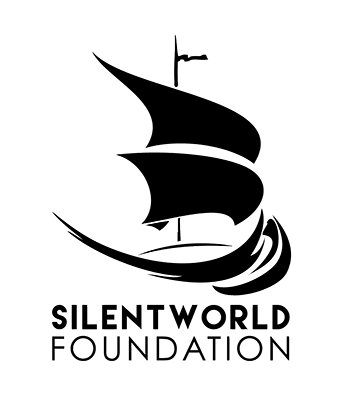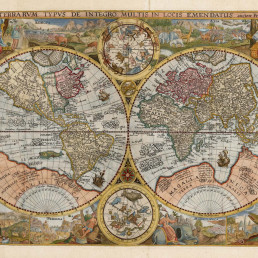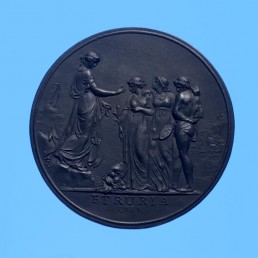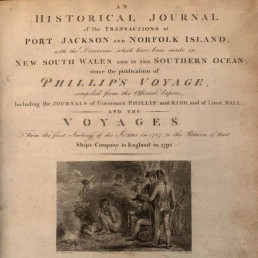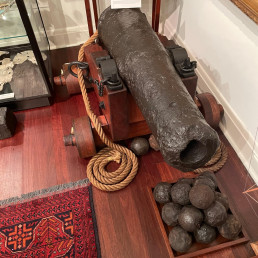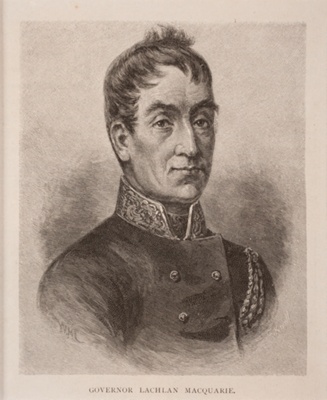
Name/TitlePortrait of Lachlan Macquarie
About this objectPortrait of Lachlan Macquarie. Lachlan Macquarie (1762-1824), was the fifth Governor of NSW. He served in this role between 1810 and 1821, and was crucial in transforming New South Wales from a penal colony into what would become Australia.
Upon his arrival in Sydney, Macquarie found conditions very dire with the colony on the verge of famine, the drinking water of the Tank Stream contaminated, and buildings run down and dilapidated. He immediately commenced a program of public works and conducted a review of available land to improve food supplies.
During his time as Governor, Macquarie oversaw the building of government infrastructure, such as the Macquarie Street government precinct, including Hyde Park Barracks, Sydney Hospital (now Sydney Mint and NSW Parliament House) and St James Church, and the Macquarie Lighthouse at the entrance of Sydney Harbour. He also made significant improvements to Sydney’s transport infrastructure, straightening existing roads, and adding hundreds of kilometres of new roads, thus establishing new townships outside Sydney such as the five ‘Macquarie Towns’ of Windsor, Richmond, Castlereagh, Pitt Town and Wilberforce.
During this 12 year period, the population of the colony increased more than threefold to just under 40,000 people. Macquarie also established the colony’s first bank, the Bank of New South Wales, and successfully stabilised the local currency (and also outlawed rum as currency). Manufacturing was encouraged, and industries started in pottery, linen cloth, and a variety of clothing items such as boots, shoes and hats. The fledgling wool industry also expanded during this time.
By the end of his term, he had also endowed the colony with public spaces, including Hyde Park, the Domain, the Botanical Gardens, and the grounds of what would later become Sydney University. He also formally adopted the name Australia for the continent, which had been previously proposed by explorer Matthew Flinders. However, after ongoing conflict with the British Government over the cost of the public works program, and complaints from free settlers about the equal treatment given to emancipists, Macquarie eventually resigned. He returned to England in 1822 and died in London in 1824.
One of the more controversial elements of Macquarie’s time as Governor was his insistence that emancipists be treated as social equals with free settlers. Emancipists were those who were transported as convicts, and whose terms had expired or had been given pardons. Macquarie appointed convicted forger Francis Greenway as the Colonial Architect, naval mutineer Dr William Redfern as the Colonial Surgeon, and Andrew Thompson, transported for the theft of cloth, as a Justice of the Peace and Local Magistrate. This met with opposition from free settlers, who felt they should be socially superior to those who had been convicted of crime. Macquarie’s liberal attitude towards emancipists also met with disapproval from the British government, who had a more traditional view of the importance of maintaining social hierarchies.
Today Macquarie is regarded by many as the real founder of Australia as a country, as his efforts effectively transformed what had once been a penal colony into a nation. His humanitarian social conscience and insistence on equality for emancipists was remarkable in the face of sustained government opposition, and provided the groundwork for a more egalitarian society
Period19th century
Medium and MaterialsPrint. Paper and ink.
Object TypeEuropean Portraits
Object numberSF000887
Copyright Licence![]() Attribution - Non-commercial - No Derivatives (cc)
Attribution - Non-commercial - No Derivatives (cc)
Explore by category
Maps and Charts
Date range: 1541-1836
Ship Models
Date range: 1629-1890
Maritime Paintings
Date range: 1793-1849
Manuscripts and Ephemera
Date range: 1768-c1850
Medallions & Convict Tokens
Date range: 1619-1880
Landscapes
Date range: 1768-c1850
Books
Date range: 1694-c1850
Currency and Shares
Date range: 1624-1823
Printed Material
Date range: 1541-1836
Maritime Archaeology
Date range: 1629-1854
Curator's corner
New acquisitions, staff favourites and curios
Delta was a ship-rigged vessel with two decks and three masts. It was built in Dordrecht, Netherlands in 1839 at the shipyard of Jan Schouten and registered in the same port. Its hull was constructed of oak and sheathed in ‘yellow metal’. Delta was owned by H. van der Sande at the time of its loss and was engaged as a cargo trader.
The Delta carried 29 crew and passengers, while sailing from Melbourne to Batavia in ballast when wrecked at Kenn Reefs on 30 May 1854 whilst under the command of Captain J.G. Kunst. This vessel loss supports the pattern of shipwrecks located on a well-travelled shipping route that was poorly charted until the mid-nineteenth century. The crew of the Delta could see four other shipwrecks at Kenn Reefs at the time of their vessel’s loss.
Important image of a ship associated with Matthew Flinders, that would shortly become one of the most famous early shipwrecks in eastern Australian waters. This is a fine ship’s portrait, by one of the great exponents of the art
The mug is decorated with an underglaze and a blue transfer print. On the body, it is titled ‘Emigrants to Australia’. This type of body and glaze was discontinued by 1840. Comparison of the handle shape and the profile of the foot, point to the attribution of manufacture by the Davenport Factory.
Delta was a ship-rigged vessel with two decks and three masts. It was built in Dordrecht, Netherlands in 1839 at the shipyard of Jan Schouten and registered in the same port. Its hull was constructed of oak and sheathed in ‘yellow metal’. Delta was owned by H. van der Sande at the time of its loss and was engaged as a cargo trader.
The Delta carried 29 crew and passengers, while sailing from Melbourne to Batavia in ballast when wrecked at Kenn Reefs on 30 May 1854 whilst under the command of Captain J.G. Kunst. This vessel loss supports the pattern of shipwrecks located on a well-travelled shipping route that was poorly charted until the mid-nineteenth century. The crew of the Delta could see four other shipwrecks at Kenn Reefs at the time of their vessel’s loss.
Important image of a ship associated with Matthew Flinders, that would shortly become one of the most famous early shipwrecks in eastern Australian waters. This is a fine ship’s portrait, by one of the great exponents of the art
The mug is decorated with an underglaze and a blue transfer print. On the body, it is titled ‘Emigrants to Australia’. This type of body and glaze was discontinued by 1840. Comparison of the handle shape and the profile of the foot, point to the attribution of manufacture by the Davenport Factory.
Delta was a ship-rigged vessel with two decks and three masts. It was built in Dordrecht, Netherlands in 1839 at the shipyard of Jan Schouten and registered in the same port. Its hull was constructed of oak and sheathed in ‘yellow metal’. Delta was owned by H. van der Sande at the time of its loss and was engaged as a cargo trader.
The Delta carried 29 crew and passengers, while sailing from Melbourne to Batavia in ballast when wrecked at Kenn Reefs on 30 May 1854 whilst under the command of Captain J.G. Kunst. This vessel loss supports the pattern of shipwrecks located on a well-travelled shipping route that was poorly charted until the mid-nineteenth century. The crew of the Delta could see four other shipwrecks at Kenn Reefs at the time of their vessel’s loss.
